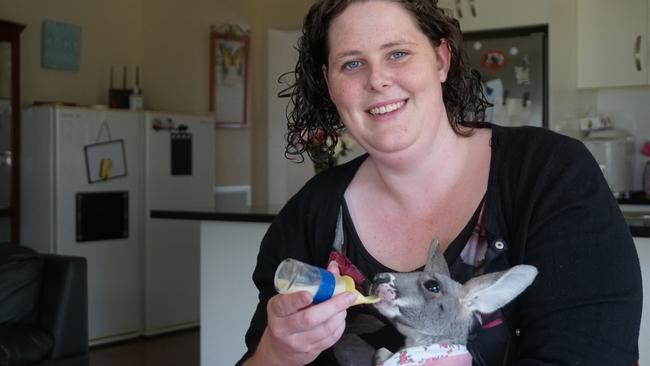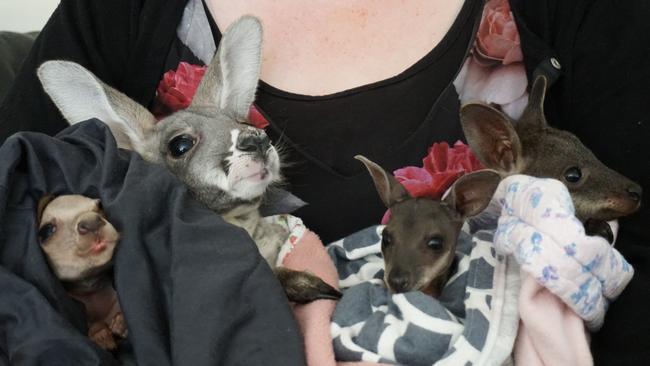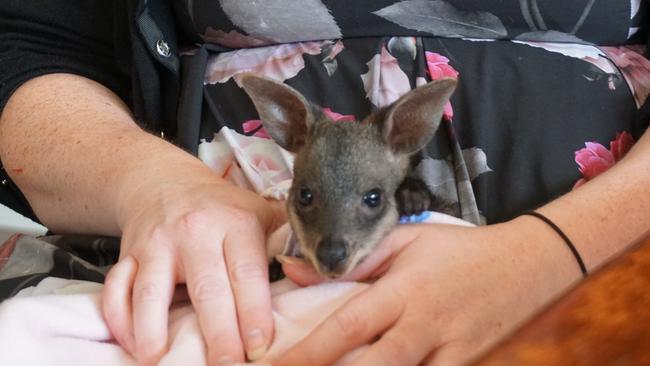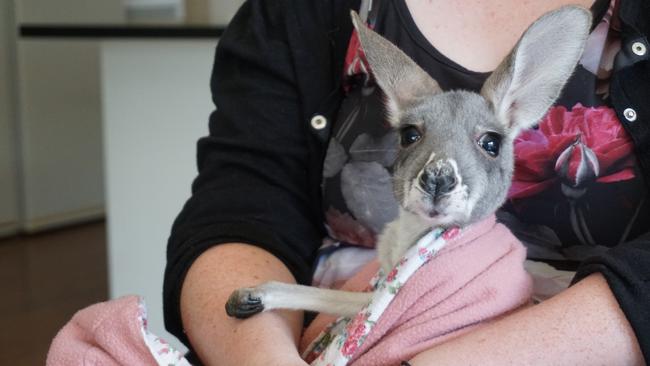Wildlife rescuer beg drivers to check pouches to prevent joeys becoming a roadkill statistic
A South East wildlife carer is pleading to help save our joeys amid the most dangerous time of the year for animal collisions on SA’s regional roads.

Mount Gambier
Don't miss out on the headlines from Mount Gambier. Followed categories will be added to My News.
Autumn is the worst season for animal collisions on our roads according to the RAA – but a Mount Gambier wildlife carer says there is constant carnage in the state’s South East.
RAA Insurance claims data compiled since 2018 has revealed crashes involving animals surge by 37 per cent in autumn compared to summer.
Kangaroos accounted for 85 per cent of incidents and RAA safety and infrastructure senior manager Charles Mountain advised motorists to avoid driving at dusk and dawn if possible in rural areas when animals are more active.
Mount Gambier Wildlife Carer Julia Dangerfield said a dozen animals were hit in the region every night with the majority going unreported and unchecked.
“A night wouldn’t go by without some sort of animal being hit,” Ms Dangerfield said.
“It’s awful. I find dead joeys in the pouch all the time that probably could have been helped if someone had stopped.

“A lot of people they’re not aware or they don’t care, they see the animals as a bit of a pest.
“They just clean up everything, it’s just carnage everywhere.”
The wildlife carer said main highways were the worst offenders with trucks unable to stop in a hurry and long weekend traffic causing a spike in fatalities.
Ms Dangerfield said the local environment was home to a high density of native animals and the most common victims were kangaroos, wallabies and emus plus wombats towards Robe and Naracoorte.
“The pines and any sort of bush on the side of the road is a dead giveaway that you should slow down,” she said.
“Driving 80 km/hr or below decreases your chance of hitting them or doing serious damage to your car quite significantly.

“Accidents happen, people just need to be responsible, check if they’re dead or alive, check the pouch and report it.”
There are dozens of orphaned kangaroo joeys in care in the region that have been saved because someone stopped and checked their mother’s pouch but Ms Dangerfield said it was rarely the people involved in the collision.
She said it was simple to check but it was crucial to call in a qualified rescuer in case an older joey was hiding nearby and stressed it was illegal to keep wildlife for more than 24 hours.
“That’s the other problem I have is that people pick them up and think they know what they’re doing and do some serious damage,” she said.

“Often they either die with the people or by the time they hand them over they’re really sick and they pass away or we have to spend hundreds of dollars at the vets to get them better again.”
In South Australia rescued kangaroos cannot be released into the wild with volunteers often bottle feeding them for up two years with $1500 to $3000 annual out of pocket expenses.
Seeing a need for more carers in the South East, Ms Dangerfield has been offering online basic rescue courses and had more than 350 sign up to learn how to correctly check a pouch.
“My aim for this area is to get more people trained up so that we have more individually licensed wildlife carers that can share the load,” she said.
Throughout the rest of the state the RAA warned the Stuart Highway, Princes Highway, Sturt Highway, Victor Harbor Road, South Eastern Freeway and Main South Road were hot spots for animal collisions.



